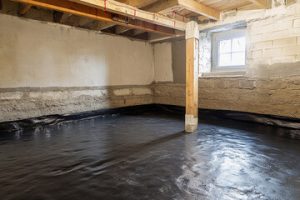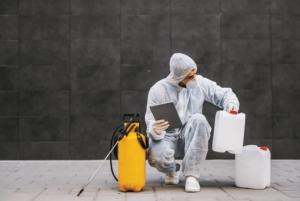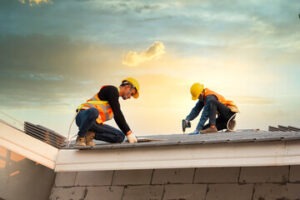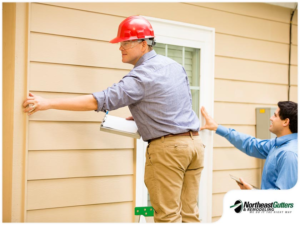Pest Control Mesquite TX involves controlling organisms that interfere with humans’ use of their environment. Methods include prevention, suppression, and eradication.
Natural features such as mountains and water bodies can restrict the spread of many pests. Natural enemies can also limit pest populations.
Mechanical or physical controls include barriers, netting, and traps. Some of these controls are very effective.
Insects
The insect species is the largest in the arthropod class and contains more than six million described species. Insects are the most diverse group of animals. They are cold-blooded and have a hard chitinous exoskeleton, three pairs of jointed legs, compound eyes, and an antenna. They are the only arthropods that have achieved sustained powered flight, and most species can also swim.
Insects play a crucial role in the environment and in human food systems. Some insects, however, can cause serious plant damage and carry diseases that affect people and animals. They suck juices from plants, chew leaves and stems, bore into roots, kill seedlings, and spread pathogens. They also consume natural fibers, destroy wood building materials, spoil stored grain, and cause abrasions on surfaces.
Some insects are solitary; others, such as bees and ants, live in well-organized colonies with a queen and worker populations. A few, such as fleas and lice, parasitize other animals for food. Others, such as earwigs, communicate with each other by emitting pheromones.
Greenhouse growers can utilize beneficial insects to control pests and enhance crop production in a sustainable manner. Biological control organisms (also known as “natural enemies”) are effective alternative pest management tools to chemical pesticides, which can lead to resistance and residue accumulation in crops. They are effective when used as part of an integrated pest management program, and their release should be coordinated with the presence of specific pests in a greenhouse.
When choosing a biological control strategy, growers should consider factors such as the cost of beneficial insect releases, optimum timing for release, habitat requirements, and compatibility with existing greenhouse horticultural practices. For optimal effectiveness, they should also consult with agronomists or entomologists who are familiar with the biology and behavior of these organisms.
Fungi
Thousands of species of fungi infect plants, animals and humans, playing important roles in the ecosystem. Fungi are saprobes, obtaining their nutrients from decaying organic material – mostly plant debris and leaves. Fungi also play an important role in nutrient recycling and decomposition, releasing the insoluble polysaccharides cellulose and lignin into easily absorbable glucose molecules.
Fungi are multicellular organisms that reproduce both sexually and asexually. They produce vast numbers of spores, which are dispersed by wind, raindrops and other means. When a fungal spore lands in an appropriate habitat it germinates into a hypha, the cellular threads that form the body of the fungus. The hyphae grow and multiply until the fungus has grown to the point that it is visible, usually as a white fungus. The fungus then produces spores again and the cycle continues.
Entomopathogenic fungi (EPF) are used in integrated pest management programs to kill or disable insect pests. Currently the majority of biopesticides on the market are based on hypocrealean ascomycetes, including Beauveria bassiana, Metarhizium sorokin and Akanthomyces leberti (Ascomycota: Hypocreales).
EPF have unique features that distinguish them from other microorganisms that are used in biological control. They penetrate the host without ingestion, causing pest death through nutrient depletion and invasion of internal tissues and organs. They also release secondary metabolites with insecticidal properties and secrete proteins that damage the host cuticle and internal structures.
Environmental competence of EPF is a crucial aspect of their ability to establish and maintain effective infections. It is dependent on temperature, primarily the rate at which fungal propagules are depleted, and humidity. The most effective fungi for insect biocontrol must be environmentally competent in order to achieve high virulence in the target host. Achieving this requires that the fungal strain be of the same geographical origin and/or habitat as the agroecosystem where it will be used, or be produced in a climate similar to that of the target habitat.
Weeds
Ever since people began cultivating plants, unwanted vegetation has plagued fields and gardens. Plants that grow where they are not wanted deprive crop plants of water, soil nutrients, and sunlight. They may also compete with or crowd out desired crops for space, block the harvest, or harbor plant disease organisms.
Any plant that grows where it is not intended is a weed. Weeds can be annuals, biennials, or perennials, and may be herbs, grasses, flowers, or shrubs. Some weeds have desirable traits, such as culinary and medicinal herbs, forage crops, or cover crops, which make them part of the farm ecosystem rather than a nuisance. Invasive exotic weeds, such as kudzu (Pueraria thunbergiana), can choke out native vegetation and disrupt natural or agricultural ecosystems over broad geographic areas.
Weeds are spread by wind or rain, or by animals and humans. They may also be carried to new locations in the fur or clothing of animals that eat or carry them, or in the tires or wheels of cars, trucks, or machinery. Weed seeds may also be dispersed by birds that eat them and excrete them elsewhere, or by bees that collect them for pollination.
Using a combination of cultural and chemical methods, the goal is to limit weeds to levels that do not affect crop yields or quality. Pre-planting weed control and avoiding the use of herbicides during seed bed formation helps with this goal, as does planting into a clean, weed-free seedbed. In-crop weed control is also important, as is a suitable break crop to reduce weed seed bank buildup. Irrigation uniformity is critical for successful in-crop weed control, as it limits stress on crop plants and their ability to outcompete weeds.
Rodents
Rodents, such as rats and mice, are a significant problem worldwide. They damage crops and cause billions in losses in electrical systems by chewing through the wires that deliver electricity to homes, businesses, hospitals and factories. They also carry diseases that threaten human health, including the deadly bubonic plague and typhus. Rodents are an important part of the food chain and help maintain grassland habitats in many areas, but when not controlled, they can invade crop fields and spoil food supplies. Many species of rodents have become invasive in the United States and are responsible for the extinction of native species, such as the dodo bird.
Rodents are active year round, but some species enter periods of dormancy or deep hibernation. Rodents live in a wide variety of shelters, from rock crevices and tree holes to cardboard boxes, wall voids, wood or plastic pallets and garbage bins. They are usually seen from dusk through dawn and can be identified by droppings, gnaw marks and grease marks (an oily substance called sebum that accumulates along paths rodents travel).
Reduce rodent problems by inspecting the premises regularly for signs of a infestation such as greasy stains, chewed edges of building components and tripped circuit breakers. Keep food, trash and compost in closed containers, jars or tins to prevent rodents from accessing them. Keep doors and window screens tightly shut, clear floor space around them, and use metal kick plates to prevent rodents from climbing or crawling over them. Seal cracks and crevices that are larger than a dime or quarter, especially those around water pipes, furnaces, vents and electric cables. Eliminate accessible nesting sites by trimming trees and removing plants that touch structures, such as ivy.
Birds
Birds provide a number of ecosystem services that help control pests, including dispersing seeds and acting as natural pest predators. The loss of these services can have a large economic impact, since crops may fail and jobs will be lost.
Studies have shown that birds can effectively regulate the populations of forest and crop insects and decrease the intensity of insect outbreaks. Their predation can significantly reduce and even eliminate the populations of some pests during non-outbreak years, allowing for longer intervals between outbreaks. Birds can also significantly alter the location and spread of outbreaks by lowering population peaks during an outbreak.
While the effectiveness of bird predation varies between species and locations, all bird species appear to be capable of controlling agricultural pests in some way. Some species, however, seem to be better at this than others. In particular, woodpeckers are able to control invasive beetles by disrupting their nests.
The majority of birds are protected by the Migratory Bird Treaty Act, so they cannot be harassed or killed, unless it is necessary for pest control. Some farmers use visual deterrents, such as scarecrows, reflective tape, owls and scary-eye balloons. Helikites, which are tethered high in the sky and emit lasers that mimic birds of prey, are becoming more popular in berry-and cherry-growing areas.
A study of fecal samples collected from birds on 11 farms in Western Massachusetts showed that the frequency of pests and their natural enemies (see Table 2) varied between species. Statistical tests (PERMANOVA and GLM) revealed that the presence of certain predictors, such as bird species, age, DOY, and site, significantly affected the likelihood of consuming specific pest species. Birds exhibited positive and significant effects on ecological indicators, with negative or neutral impacts on economic indicators in nearly half of the cases.
Pest Control Mesquite TX involves controlling organisms that interfere with humans’ use of their environment. Methods include prevention, suppression, and eradication.
Natural features such as mountains and water bodies can restrict the spread of many pests. Natural enemies can also limit pest populations.
Mechanical or physical controls include barriers, netting, and traps. Some of these controls are very effective.
Insects
The insect species is the largest in the arthropod class and contains more than six million described species. Insects are the most diverse group of animals. They are cold-blooded and have a hard chitinous exoskeleton, three pairs of jointed legs, compound eyes, and an antenna. They are the only arthropods that have achieved sustained powered flight, and most species can also swim.
Insects play a crucial role in the environment and in human food systems. Some insects, however, can cause serious plant damage and carry diseases that affect people and animals. They suck juices from plants, chew leaves and stems, bore into roots, kill seedlings, and spread pathogens. They also consume natural fibers, destroy wood building materials, spoil stored grain, and cause abrasions on surfaces.
Some insects are solitary; others, such as bees and ants, live in well-organized colonies with a queen and worker populations. A few, such as fleas and lice, parasitize other animals for food. Others, such as earwigs, communicate with each other by emitting pheromones.
Greenhouse growers can utilize beneficial insects to control pests and enhance crop production in a sustainable manner. Biological control organisms (also known as “natural enemies”) are effective alternative pest management tools to chemical pesticides, which can lead to resistance and residue accumulation in crops. They are effective when used as part of an integrated pest management program, and their release should be coordinated with the presence of specific pests in a greenhouse.
When choosing a biological control strategy, growers should consider factors such as the cost of beneficial insect releases, optimum timing for release, habitat requirements, and compatibility with existing greenhouse horticultural practices. For optimal effectiveness, they should also consult with agronomists or entomologists who are familiar with the biology and behavior of these organisms.
Fungi
Thousands of species of fungi infect plants, animals and humans, playing important roles in the ecosystem. Fungi are saprobes, obtaining their nutrients from decaying organic material – mostly plant debris and leaves. Fungi also play an important role in nutrient recycling and decomposition, releasing the insoluble polysaccharides cellulose and lignin into easily absorbable glucose molecules.
Fungi are multicellular organisms that reproduce both sexually and asexually. They produce vast numbers of spores, which are dispersed by wind, raindrops and other means. When a fungal spore lands in an appropriate habitat it germinates into a hypha, the cellular threads that form the body of the fungus. The hyphae grow and multiply until the fungus has grown to the point that it is visible, usually as a white fungus. The fungus then produces spores again and the cycle continues.
Entomopathogenic fungi (EPF) are used in integrated pest management programs to kill or disable insect pests. Currently the majority of biopesticides on the market are based on hypocrealean ascomycetes, including Beauveria bassiana, Metarhizium sorokin and Akanthomyces leberti (Ascomycota: Hypocreales).
EPF have unique features that distinguish them from other microorganisms that are used in biological control. They penetrate the host without ingestion, causing pest death through nutrient depletion and invasion of internal tissues and organs. They also release secondary metabolites with insecticidal properties and secrete proteins that damage the host cuticle and internal structures.
Environmental competence of EPF is a crucial aspect of their ability to establish and maintain effective infections. It is dependent on temperature, primarily the rate at which fungal propagules are depleted, and humidity. The most effective fungi for insect biocontrol must be environmentally competent in order to achieve high virulence in the target host. Achieving this requires that the fungal strain be of the same geographical origin and/or habitat as the agroecosystem where it will be used, or be produced in a climate similar to that of the target habitat.
Weeds
Ever since people began cultivating plants, unwanted vegetation has plagued fields and gardens. Plants that grow where they are not wanted deprive crop plants of water, soil nutrients, and sunlight. They may also compete with or crowd out desired crops for space, block the harvest, or harbor plant disease organisms.
Any plant that grows where it is not intended is a weed. Weeds can be annuals, biennials, or perennials, and may be herbs, grasses, flowers, or shrubs. Some weeds have desirable traits, such as culinary and medicinal herbs, forage crops, or cover crops, which make them part of the farm ecosystem rather than a nuisance. Invasive exotic weeds, such as kudzu (Pueraria thunbergiana), can choke out native vegetation and disrupt natural or agricultural ecosystems over broad geographic areas.
Weeds are spread by wind or rain, or by animals and humans. They may also be carried to new locations in the fur or clothing of animals that eat or carry them, or in the tires or wheels of cars, trucks, or machinery. Weed seeds may also be dispersed by birds that eat them and excrete them elsewhere, or by bees that collect them for pollination.
Using a combination of cultural and chemical methods, the goal is to limit weeds to levels that do not affect crop yields or quality. Pre-planting weed control and avoiding the use of herbicides during seed bed formation helps with this goal, as does planting into a clean, weed-free seedbed. In-crop weed control is also important, as is a suitable break crop to reduce weed seed bank buildup. Irrigation uniformity is critical for successful in-crop weed control, as it limits stress on crop plants and their ability to outcompete weeds.
Rodents
Rodents, such as rats and mice, are a significant problem worldwide. They damage crops and cause billions in losses in electrical systems by chewing through the wires that deliver electricity to homes, businesses, hospitals and factories. They also carry diseases that threaten human health, including the deadly bubonic plague and typhus. Rodents are an important part of the food chain and help maintain grassland habitats in many areas, but when not controlled, they can invade crop fields and spoil food supplies. Many species of rodents have become invasive in the United States and are responsible for the extinction of native species, such as the dodo bird.
Rodents are active year round, but some species enter periods of dormancy or deep hibernation. Rodents live in a wide variety of shelters, from rock crevices and tree holes to cardboard boxes, wall voids, wood or plastic pallets and garbage bins. They are usually seen from dusk through dawn and can be identified by droppings, gnaw marks and grease marks (an oily substance called sebum that accumulates along paths rodents travel).
Reduce rodent problems by inspecting the premises regularly for signs of a infestation such as greasy stains, chewed edges of building components and tripped circuit breakers. Keep food, trash and compost in closed containers, jars or tins to prevent rodents from accessing them. Keep doors and window screens tightly shut, clear floor space around them, and use metal kick plates to prevent rodents from climbing or crawling over them. Seal cracks and crevices that are larger than a dime or quarter, especially those around water pipes, furnaces, vents and electric cables. Eliminate accessible nesting sites by trimming trees and removing plants that touch structures, such as ivy.
Birds
Birds provide a number of ecosystem services that help control pests, including dispersing seeds and acting as natural pest predators. The loss of these services can have a large economic impact, since crops may fail and jobs will be lost.
Studies have shown that birds can effectively regulate the populations of forest and crop insects and decrease the intensity of insect outbreaks. Their predation can significantly reduce and even eliminate the populations of some pests during non-outbreak years, allowing for longer intervals between outbreaks. Birds can also significantly alter the location and spread of outbreaks by lowering population peaks during an outbreak.
While the effectiveness of bird predation varies between species and locations, all bird species appear to be capable of controlling agricultural pests in some way. Some species, however, seem to be better at this than others. In particular, woodpeckers are able to control invasive beetles by disrupting their nests.
The majority of birds are protected by the Migratory Bird Treaty Act, so they cannot be harassed or killed, unless it is necessary for pest control. Some farmers use visual deterrents, such as scarecrows, reflective tape, owls and scary-eye balloons. Helikites, which are tethered high in the sky and emit lasers that mimic birds of prey, are becoming more popular in berry-and cherry-growing areas.
A study of fecal samples collected from birds on 11 farms in Western Massachusetts showed that the frequency of pests and their natural enemies (see Table 2) varied between species. Statistical tests (PERMANOVA and GLM) revealed that the presence of certain predictors, such as bird species, age, DOY, and site, significantly affected the likelihood of consuming specific pest species. Birds exhibited positive and significant effects on ecological indicators, with negative or neutral impacts on economic indicators in nearly half of the cases.






